When mirrorless cameras first started to appear on the market back in 2008 and 2009, the only models to incorporate an electronic viewfinder into the body were the Panasonic Lumix G1 and G2. There were others such as the Olympus Pen E-P2 that provided you with the option of an external electronic viewfinder but for everything else, you were stuck with the LCD screen.
Then, two years ago, Olympus set the standard with the OM-D E-M1 whose viewfinder was among the biggest, brightest and sharpest on the market. It became both a reference and a source of competition for the likes of Fujifilm, Sony, Panasonic, Samsung, and Leica, all of who went on to produce mirrorless cameras with outstanding electronic viewfinders of their own.
Today, nearly every mid to high-end mirrorless camera comes with a built-in electronic viewfinder, and the quality is improving with every new iteration. Unlike the traditional OVF found on a DSLR, these EVFs display lots of useful information such as focus peaking, live histograms, information overlays, magnification, exposure preview, and much more. Indeed, my humble belief is that those who felt EVFs would never hold a candle to optical viewfinders may find themselves eating their words in a few years’ time.
Since buying the Sony A7r II and Lumix GX8, Mathieu and I can officially say that we’ve tried out every single mirrorless camera with a viewfinder. (Hooray!) As such, we thought it could be revealing to share with you the viewfinders we feel provide the best overall user experience.
About EVF technology
There are three main technologies used for electronic viewfinders. It is actually the same found on many TV screens:
- LCD (liquid-crystal display): it is based on the light modulating capabilities of liquid crystals. Since liquid crystals can’t emit light directly, the LCD panel uses backlight to illuminate the pixels.
- OLED (organic light-emitting diode): it is a light-emitting diode (LED) in which the emissive electroluminescent layer is made organic compounds. It generates light in response to an electric current which means that the pixels actually emit their own light.
- LCOS (Liquid crystal on silicon): it is based on a three-panel designs and the three RGB colours are divided between the three individual LCOS chips. The images are then combined optically. The single LCOS panel is composed of a liquid crystal layer on top of a silicon backplane.
With the most recent EVFs, companies seemed to have abandoned LCDs in favour of OLED screens that render contrast better and display deeper blacks. LCOS is used in some cameras (some Panasonic cameras and recently the Leica Q). It allows for a combined higher resolution.
Other specs such as the refresh rate (or frame rate) and time lag affect the quality and ease of use of an electronic viewfinder. Unfortunately not every brand releases complete specifications for their EVFs.
Fujifilm X-T1
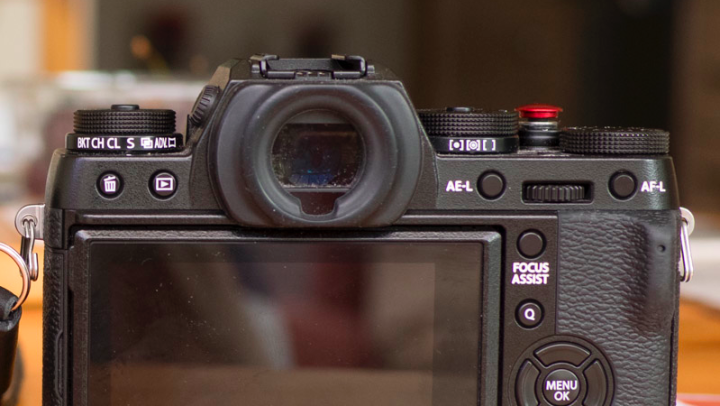
Specs:
- 0.5 in
- 100% field of view coverage
- OLED
- 2,360K dots
- 0.77x magnification with 50mm lens (35mm format equivalent)
- 60fps / 0.005s time lag
- Eye-point: 23mm
- Eye contact sensor
- Non-tilting
More than one year on from its release and the electronic viewfinder of the Fujifilm X-T1 is still our favourite. It is fast, responsive and accurate with basically all the goodies we’ve come to expect from an EVF including 100% coverage, high resolution, a fast frame rate that remains constant in all conditions, a short display time-lag (0.005s) and great magnification, but what really makes the X-T1 viewfinder stand out from the crowd are the “multi-modes.” “Full” gives you a high magnification view of a scene, “Normal” displays your shooting settings alongside the image, and “Dual” gives you a split view for manual focussing. With the final mode, you have a full view of your scene on one side of the viewfinder and a magnified view on the other. In addition to focus peaking and magnification, you also have an option called Digital Split Image whereby you align two views of your scene to achieve focus.
Are there any downsides? Well, it can be quite noisy in low light situations and still lacks an auto EVF brightness option. Otherwise, it really is a joy to use, especially in manual focus mode. It is also one of the only EVFs I feel comfortable manually focussing with even without the MF assists.
Sony A7rII
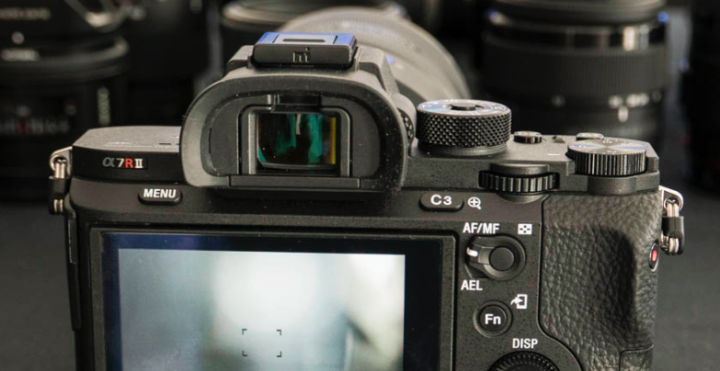
Specs:
- 0.5 in
- 100% field of view coverage
- OLED
- 2,360K dots
- 0.78x magnification with 50mm lens (35mm format equivalent)
- Eye-point: 23mm
- Eye contact sensor
- Non-tilting
The Sony A7r II claims the world’s highest viewfinder magnification of 0.78x, though in the real world, you can’t tell the difference between it and the other viewfinders with 0.77x magnification such as the X-T1 or GX8. (It is however a big improvement over the .70x magnification of the previous A7 cameras.) The Zeiss T* coating on one of the elements makes the image sharp and clear even at the corners but it is worth remembering that the camera won’t give you the highest display quality by default. You’ll need to go into Toolbox (Section 2) in the Menu and change Display Quality from Standard to High. The camera also lets you choose between Live View and auto brightness depending on the ambient light in your scene. The lag-time is also excellent.
The negative point is the eye sensor. It is too sensitive. Even when your face isn’t that close to the EVF or when you are using the LCD, it will activate out of the blue.
Leica Q
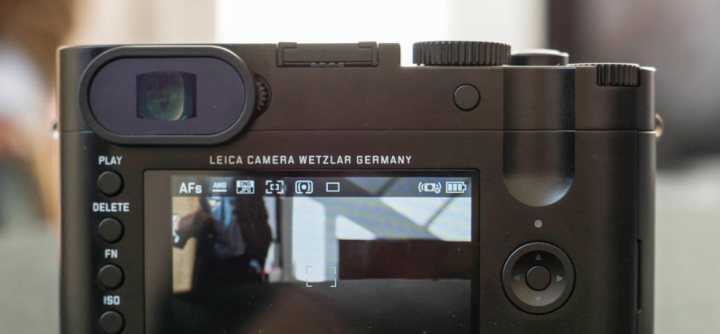
Specs:
- 100% field of view coverage
- LCOS
- 3,680K dots (1280 × 960 pixels x 3 colours)
- Size and Magnification not officially specified
- Eye-point: 17mm
- Eye contact sensor
- Non-tilting
While the Sony A7r II has the highest magnification, the Leica Q claims the title of the mirrorless camera with the highest resolution EVF on the market at 3,680K-dots. However that resolution is actually a combination of 3 different resolution assigned to each RGB panel. Some will argue that 3.680k dots is not the real resolution of the viewfinder and in a way this is true. However in a real world experience, it is indeed a wonderful EVF to use. Like the other EVFs on this list, it is clear, bright and reactive, though there is some slight lag in dark conditions. It also one of the best EVFs for manual focussing, as the high resolution makes the peaking very visible. That said, it also works well without any MF assists at all.
Panasonic Lumix GX8
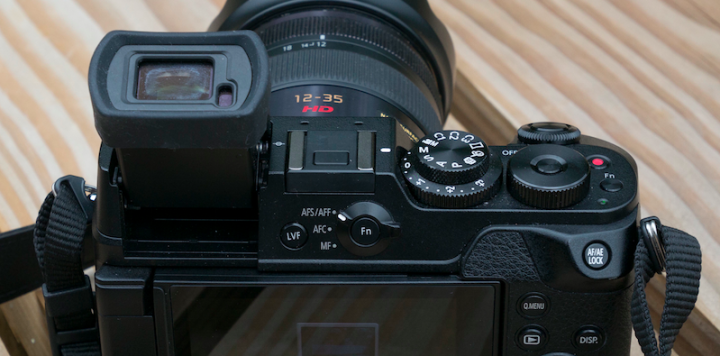
Specs:
- Size not specified
- 100% field of view coverage
- OLED
- 2,360K dots
- 0.77x magnification with 50mm lens (35mm format equivalent)
- Eye-point: 21mm
- Eye contact sensor
- Tilting
The Lumix GX8 boasts a high magnification of 0.77x, putting it on par with the X-T1. It is very clear and bright with a high refresh rate and very little noise. It is definitely the best EVF we’ve tried on a Lumix camera. But what really makes this particular viewfinder so special is its tilting mechanism – you can tilt it up by 90 degrees for oddly angled shots in difficult light conditions. Of course if this feature doesn’t interest you, you can always choose not to tilt it.
And how could we not mention the EVF that started it all…
Olympus OM-D E-M1
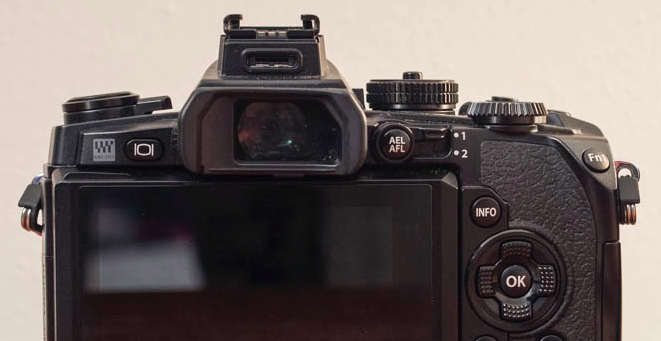
Specs:
- 100% field of view coverage
- LCD
- 2,360K-dots
- 0.74x magnification with 50mm lens (35mm format equivalent)
- Eye-point: 21mm
- 120fps / 0.016s time lag (with firmware 2.0 and when frame rate is set to High)
- Eye contact sensor
- Non-tilting
Despite being two years old, the OM-D E-M1’s viewfinder, which was actually first introduced in the form of the VF-4 external EVF for the Pen E-P5, is definitely still in the running. It lacks the OLED panel of the other models but handles various light conditions very well, has very little lag (0.016s, reduced last year via a firmware update) and is very responsive. The camera also adjusts the brightness of the EVF according to the ambient light in your scene to give you an optimal preview.
**Note: The new E-M5 Mark II has the same EVF as the E-M1.
Does your mirrorless camera have an EVF? If so, what do you think of the quality?
